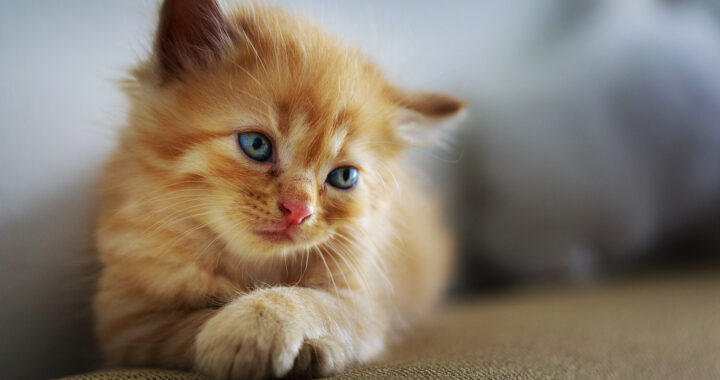The internet has branded them as the silliest variant of domestic cats. Some have branded them as the golden retrievers of the feline world. But an orange tabby cat is not a specific breed. The color of their fur is a product of genetics. Nevertheless, when it comes to varieties, orange cats come in different shades and various sizes and shapes. They are also iconic. Some of the renowned cats in popular culture are garbed with a sun-kissed coat that reminds of warmth and fun.
Random Facts About Orange Cats
Understanding the Science Behind the Orange Fur
1. Pigmentation and Patterns
The pigment responsible for the fur color of orange cats is pheomelanin. This type of melanin imparts a range of reddish to yellowish colors. It is also the same pigment that causes red hair and pinkish skin hues in humans and is concentrated in certain parts of the human body like the lips and the mammary papilla. Pheomelanin is also pronounced in birds with red feathers and other animals with reddish and yellowish coats like tigers and lions.
Note that the tabby coat pattern is one of the most common and ancient feline coat patterns. All orange cats are tabbies. However, because of the varieties in fur colors among domestic cats, not all tabbies are orange. There are four known tabby patterns. These are mackerel or classic tiger stripes, classic or swirling patterns that resemble a marble cake, spotted spots of colors of various sizes spread across the feline body, and ticked or a salt-and-pepper look.
Melanin is a group of biomolecules with various functions. One of which is to protect skin cells from ultraviolet radiation. The dark brown pigment called eumelanin provides the best protection. Pheomelanin is much less effective. Exposure to ultraviolet radiation can trigger it to produce reactive oxygen species that can cause oxidative stress and DNA damage. This is why orange cats are more prone to skin cancer than cats with darker-colored coats.
2. Genetics and Biological Sex
The fur color and coat patterns of cats can be sex-linked and the specific pheomelanin pigment is expressed by the so-called O gene located on the X chromosome. The dominance of this gene overrides other color-producing genes like the agouti gene and the dilution gene. It specifically influences pigment-producing cells called melanocytes to produce pheomelanin instead of eumelanin. Orange cats essentially inherit a dominant O gene.
Male cats have one X chromosome and one Y chromosome. They only require one copy of the O gene on the X chromosome to express a full orange coat. Female cats have two X chromosomes and one of these two is inactivated early in development. This happens in all female mammals. Hence for them to have a full orange coat, they need to inherit two copies of the O gene on both X chromosomes. This is why 80 percent of orange cats are male.
In addition, if a particular female cat inherits one X chromosome with the O gene and another X chromosome with a non-O gene, the coat color will depend on which chromosome is active in each cell. The random X chromosome inactivation specifically explains why female cats that inherit both the O gene and non-O gene develop a calico or tortoiseshell coat. This is also the reason why almost 100 percent of calico cats are biologically female.
Historical and Cultural Significance of Orange Cats
There is a handful of orange cats in popular culture. Garfield from the titular Garfield comic strip that was first launched in 1978 is one of the most popular ones. Puss in Boots is another example. The advertising mascot Morris the Cat for the 9Lives brand of cat food has appeared not only in television commercials but also in various media channels like magazines, movies, and public service announcements since its first introduction in 1968.
Furthermore, in several cultures, orange cats are considered symbols of luck and prosperity. For example, orange-colored cats are often depicted in Japanese maneki-neko or beckoning cat figures. These figures are depicted as a cat with one paw raised. They are displayed in stores because they are believed to bring good luck and fortune to their owners. The vibrant sun-kissed fur represents gold and is thought to symbolize wealth and prosperity.
It is also worth noting that orange cats are often associated with the sun and sun-related deities due to their vibrant and warm coloring. These cats were linked to the Egyptian sun god Ra and they were thought to carry his protective and life-giving energy. In Celtic folklore, cats were sometimes viewed as mystical guardians. Orange cats, with their striking appearance, were thought to have protective qualities, keeping homes safe from evil spirits.
The “M” marking of tabbies has also inspired various myths and legends because people saw it as a supernatural or a divine sign. For example in Christian folklore, it is said to have been bestowed by the Virgin Mary as a mark of gratitude and protection to a cat that comforted baby Jesus with its warmth and soothing presence by curling up next to him in a manger. This particular folklore has associated tabbies with maternal love and protection.
Furthermore, in Islamic tradition, the marking is believed to come from the Prophet Muhammad, who was fond of cats and once blessed a tabby named Muezza for its loyalty. According to the story, a call to prayer came while the cat was sleeping on his robe. The prophet did not want to disturb its slumber and went on cutting the sleeve off instead. The cat bowed to him out of gratitude and he placed his hand on its forehead, thus leaving the mark.
